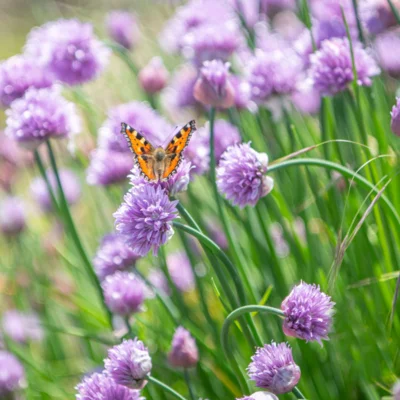
3 AB Chives
Cultivate the delicate aroma and fresh flavor of chives, also known as civets, a must-have aromatic plant! This perennial plant has a clump of fine, hollow leaves, 15 to 25 cm long, and in early summer, a multitude of pink, edible flowers in the shape of a small pompon, with a delicious onion flavour. Easy to care for, chives can be grown in the garden, in tubs, pots or window boxes.
Find out how to grow and harvest this fine herb so you can use its flowers or stems in any recipe, bringing flavor and color to your cooking.
How to grow chives
Hardy and able to thrive in the most difficult conditions, chives prefer cool, relatively rich soil and sunny exposure.
- Transplant chives in early autumn or spring, in the garden, after the last frosts, 15 to 20 cm apart in all directions, in pots or window boxes.
- Mulch the plants to keep the soil cool and moist.
- Water in dry periods.
- Pull plants back at the end of the season.
Prune regularly or divide clumps every 2 to 3 years to give plants more vigor and encourage the production of fresh, fragrant new stems.
Harvesting chives
Chives can be harvested in the garden all year round, as and when required. Cut off the peripheral leaves, as close as possible to the base of the clump, using a chisel. Flowers can be harvested as soon as they open, in early summer.
This aromatic plant, in the same family as garlic and onions, has a fresh, garlicky taste. Its leaves are eaten fresh, raw or cooked, and flavour salads, savoury pies, stews, stuffings and more.
Along with parsley, chervil and tarragon, chives are one of the 4 traditional herbs used in recipes for omelettes and fromage frais with herbs.
How to store chives ?
Chive stems are best stored whole or snipped in the freezer, as they tend to lose their aroma and flavor when dried.
Chives shipping and delivery
Orders are dispatched every Monday.
- Shipment to mainland France only.
- Shipping cartons designed for optimum protection of plants.
- Free shipping does not apply to plants.






